Today Casio is best known for watches, keyboards and calculators. In fact it pretty much always has been being the first producer of the electronic calculator and digital watch. But it was a big player in the digital camera market with it being a key player in the 90’s and Noughties. This 2004 6MP Casio QV-R61 compact is a typical example.
Casio & the Camera
Casio was founded and would become best know for being pioneers of calculators and digital watches. But it would follow other Japanese consumer electronic giants like Sony, Panasonic, Sharp, Sanyo and even Sega (okay that was one camera) into the burgeoning Digital Camera market. Like Panasonic they had some form selling film cameras (notably the REF series re-badged K mount Cosina SLRs and at least one compact).

But it would be digital where Casio excelled. They were notable for producing the QV-10 in 1995. This was the first digital with an LCD screen. the company developed a reputation for having very fast cameras and ones that were quite innovative. The the 2008 12x zoom bridge Exilim EX-F1. It offered full HD @ 60fps video recording.
The 2010’s saw rivals catch up but Casio limped on until 2018 until it threw in the camera production towel. It had long since left the US market and is no longer remembered as a camera maker.
The Casio QV-R61
This is not exactly one of Casio’s headling grabbing high end models. This was a budget 6MP digi compact launched in 2004. It was sold alongside the lower resolution QV-R51.
The Casio QV-R61 sported the by then typical X3 optical zoom and class average resolution. It’s a pretty basic camera but has in theory some pluses. It uses AA batteries, has secondary optical finder, takes SD cards and has a pretty nifty set of scenic mode options.
I say in principle, but I though this was dead – it wouldn’t work with new q AA batteries. It did splutter into life with NiCad (and no – it’s not set to them). It alos was fine with premium batteries. Fussy beast.
Looks
A typical silver plastic with metal highlights stubby compact of the era. The stubbyness is down to the AA batteries. It feels comfortable in the hand.
On the top plate you have an on/off button and the shutter button with a zoom toggle. On the rear is the LCD with a typical joypad plus menu and display buttons. Above the LCD by viewfinder is the buttons to switch from play back to camera mode.
There is no mode button (you must access that from the menus)
Casio QV-R61 Core Spec
6MP effective 1/1.8″ CCD sensor. Nice to see no bullshitting about the whole sensor. This is combined with a 7 element in 6 groups 8-24mm 1:2.8-4.9 lens with an aspherical element. That’s equivalent to 39-117mm full frame (so not that wide).
Under the hood it has Exilim image processing system, pinched from it’s sophisticated Exilim stable mates.
-Focus system
7 AF points are available. As common with compacts the camera defaults to single central point. Usual macro and focus lock options present plus a infinity mode which is nice. Manual focus is possible although push button.
A respectable 60cm to infinity is possible on wide in normal mode is available. Macro lets you go in at 10cm at wide. Tele end doesn’t get any closer than 60cm. Manual focus allows you to go from 10cm to infinity.
-Metering & Exposure
Metering is matrix but no segment detailing is given. The manual however shows this image.
This suggests 5 (image) or 6 (icon) segment metering with 4 wide areas around 1 or 2 central points. It does also offer centre-weight and spot.
The manual describes both a electronic and manual shutter although you can’t select either. The speeds are mode dependant normal 1/8-1/2000 but in night mode you can drop to 4secs. The camera does have a switching aperture but only one change. So that’s f/2.8 or f/4.8 wide or f/4.9 to f/8.4 tele. There is no bulb function.
EV Compensation (±2EV with ⅓ EV steps) is possible but no bracketing. Irritatingly you need to go into the menu to apply EV compensation.
ISO speeds are 64, 125, 250 and 500 ISO with an additional auto setting. The usual image quality, sharpness and contrast settings are present. For reference I shot at fine with sharpness set at 0, but that can go to a negative value.
White balance can be switched to 7 presets – 6 defined and one user set.
-Flash & Storage
No GN given but the flash is good for 0.6-2.6m at wide (only 0.6-2.1m tele) on auto settings. It has the typical auto, force on, force off and red eye mode. The camera has flash assist that allows you to extend the flash range but over exposing the image.
There is a SD card slot in the battery compartment. Only standard SD cards available. The camera’s firmware was never updated which is a shame as I suspect it could support SDHC cards but that’s typical of the class.
There is a standard USB Mini jack port for PC connectivity
-Modes
Slightly irritating you need to enter the menu. You basically have can pick between Snapshot (aka normal), Movie and Best Shot (BS).
The movie mode is 320×240 and only helpful if you wanna capture ghost videos or aliens (cos they all seem to be at that res)
Best shot – BS or Best thing ?
The BS is not Bullsh*t though. Essentially this is mode menu and Casio give you a fair few – 23 to be precise. Each of these comes with a descriptor. There are the usual suspects like portait, and landscape and a descriptor for what the camera does. So for portrait – it zooms out, enhances flesh-tones and aims to blur background. In scenery it locks at infinity and sets high sharpness & high saturation. Some you could do yourself like monochrome or sepia but some are very useful such as the business card and whiteboard modes.
There is also 2 curious modes called coupling shot and preshot that take special double exposures. The coupling shot is where you take a photo and then you can hand the camera to someone else so you can take second shot so you can appear in it. The Preshot is the background equivalent you take your initial shot of the background and then get someone to take your shot in front of said background. Granted this will improve sharpness but wouldn’t it just be easier to get someone to take one shot in standard mode.
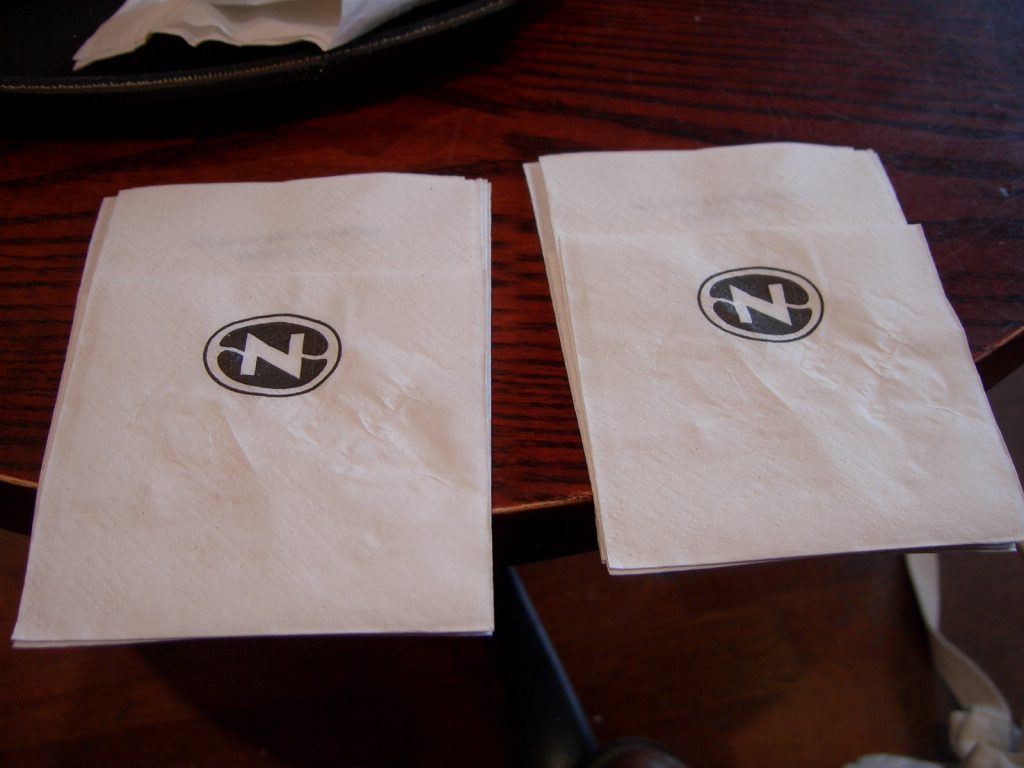
You can also define a mode which is neat ! In BS mode hitting set in the centre of the joypad brings up the choices of BS mode.
LCD
Typical of the class in it’s time . 2″ TFT with 85,000 pixels. It’s alright and shows the expected info although it is relatively low res and as usual suffers in bright light. Luckily you’ve got a optical viewfinder. This zooms with camera but has no info displayed.

Display has a histogram mode and you can add grid lines from the menu.
In use
Casio was known for speedy camera start ups. Ans the Casion QV-R61 is no exception. It boots up and is able to take a shot very rapidly, more last gen digicam than one from the early noughties.
AF lock is good and quick. It is reasonably accurate but I think others have a little edge.
The LCD suffers in bright light but you have the simple optical finder at least to allow you to frame shots,
The camera manual tellingly features more about in camera editing and Pict bridge millarky than using the thing.
Results
Not bad for a little compact overall. Not a class leader but certainly a reasonable choice
Exposure
Exposure was broadly good in daylight. The only issue was the usual bane of compacts heavily backlit shots – these came out under exposed
It isn’t really that great with night shots as is typical of these budget digitals. Even with the ISO being pushed up exposures are too long resulting in shake merging with noise. A tripod helps but it really isn’t a strong point.
Flash although limited is well controlled
I also though it did better than average for dynamic range as the iamge below shows with quite complex lighting. It’s no 100 ISO B&W film but for a Noughties cheap digi this was quite impressive.
Quality setting
Actually there just marginal difference between normal and fine setting. Even comparing fine to economy mode as below is not that marked. A 1600×1200 image takes up ~1MB, a Standarrd quality 640 KB and a economy 334KB


ISO
ISO wise when viewed as a whole image the setting stacks up okay. This is the same shot taken at 64 ISO and 250 ISO (500 ISO was over exposing due to the cameras aperture and shutter limitations).


But close up thing fall off a little


But you really need to zoom in to see the difference (look at beige background)


500 ISO is another step of worse but for a web size image you don’t really notice bar it’s overexposed
Colour Balance
Daylight on the money. Has the usual slight cast under modern warm LED light bulbs. But given this was sold in the days where CFL were eroding into the incandescent bulb market, that’s no surprise.
Optics
Overall this is okay to good for a budget 6MP of it’s time.
Wide has some barrel distortion unsurprisingly and softens only very little to the corners. Sharpness centrally is good near to mid.

But both ends are little soft at long shots when you zoom in. More so on the tele end but less radial distortion evident her.
Fringing is noticeable even when quality turned up at both ends.
Macro mode can be good. And when it is a lot of detail is captured. But with a shallow depth of field and no manual control it can be tricky.
Overall this ain’t bad. It’s no Canon Powershot G series but fir a budget camera it is pretty reasonable stuff.
Cost of the Casio QV-R61
Okay here’s the thing. ..
In mid 2022 I started buying camera like this again for a quid (before postage). This was to be a Poundland strikes back series.
But then the Gen Z’er discover digi cams. And the Digicam market has exploded. The Casio QV-R61 hasn’t quite reached the lofty heights in terms of price but the last lot sold ebay went for £10-20. So whilst I got for a quid I doubt I could now.
Final Thoughts – Not Great but not Bad
I’ve shot a few period models and for a budget camera of that era, this still weights up well. The Casio QV-R61 is no classic but will produce good enough images. The BS modes add a lot of interesting options. Although how practical some are is a matter of debate.
More demanding shooters will likely give a swerve as limited control options. The selection of modes is a little bit more complicated that it should be and the battery intolerance is a tad worrying. It is forgettable when the light drops without using the flash (weedy but well metered).
That said this is a good choice for cheap compact if you have good batteries or rechargeables. In 2005 TechRadar gave it a 3.5 out of 5. I would too.
Alternatives to the Casio QV-R61
In terms of camera I’ve tested this holds up against the Nikon CoolPix 5600 a direct rival. The Casio wins just and has better dynamic range. The 2004 Canon Powershot A400 trailed behind it but it was even more budget aim. It’s older, wiser, bigger brother the Powershot A80 was optically better than our Casio and more suitable for demanding users. Just a shame the CCD is notoriously prone to dying. The Panasonic Lumix DMC LZ2 is perhaps a better choice with a 6x zoom and optical image stabilisation. It is optically better although it’s dynamic range doesn’t quite match the Casio.
Other Info
The Casio QV-R61 manual is still available on the company’s site.

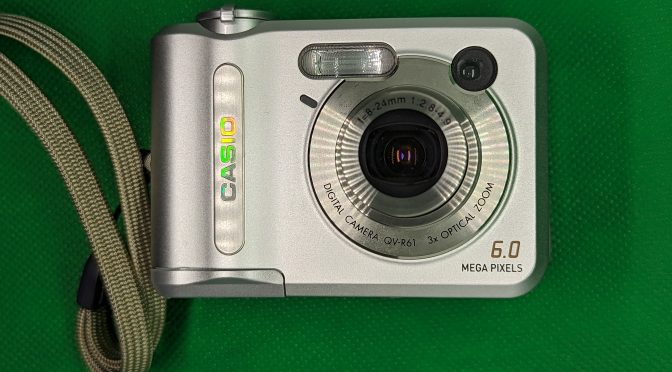

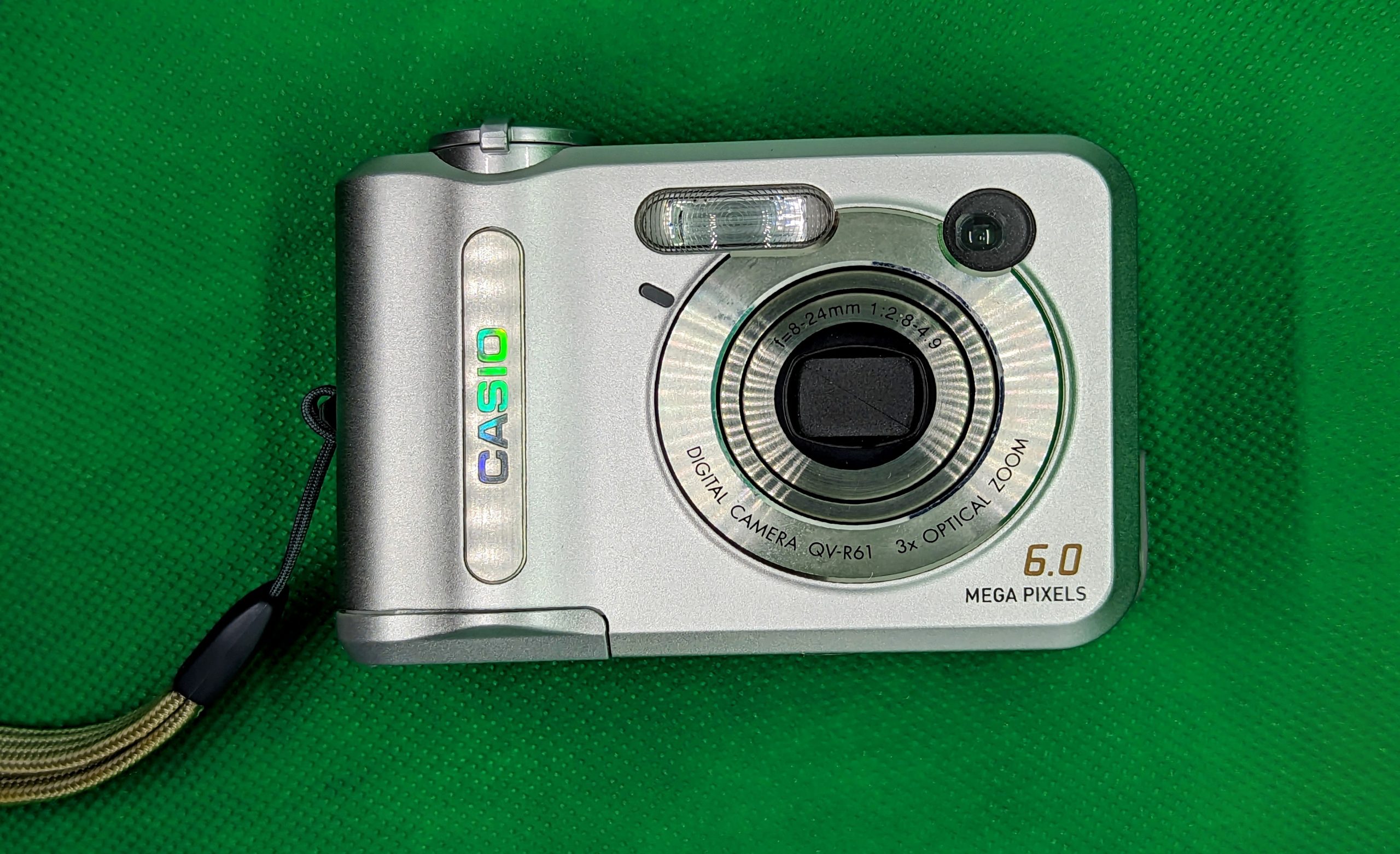
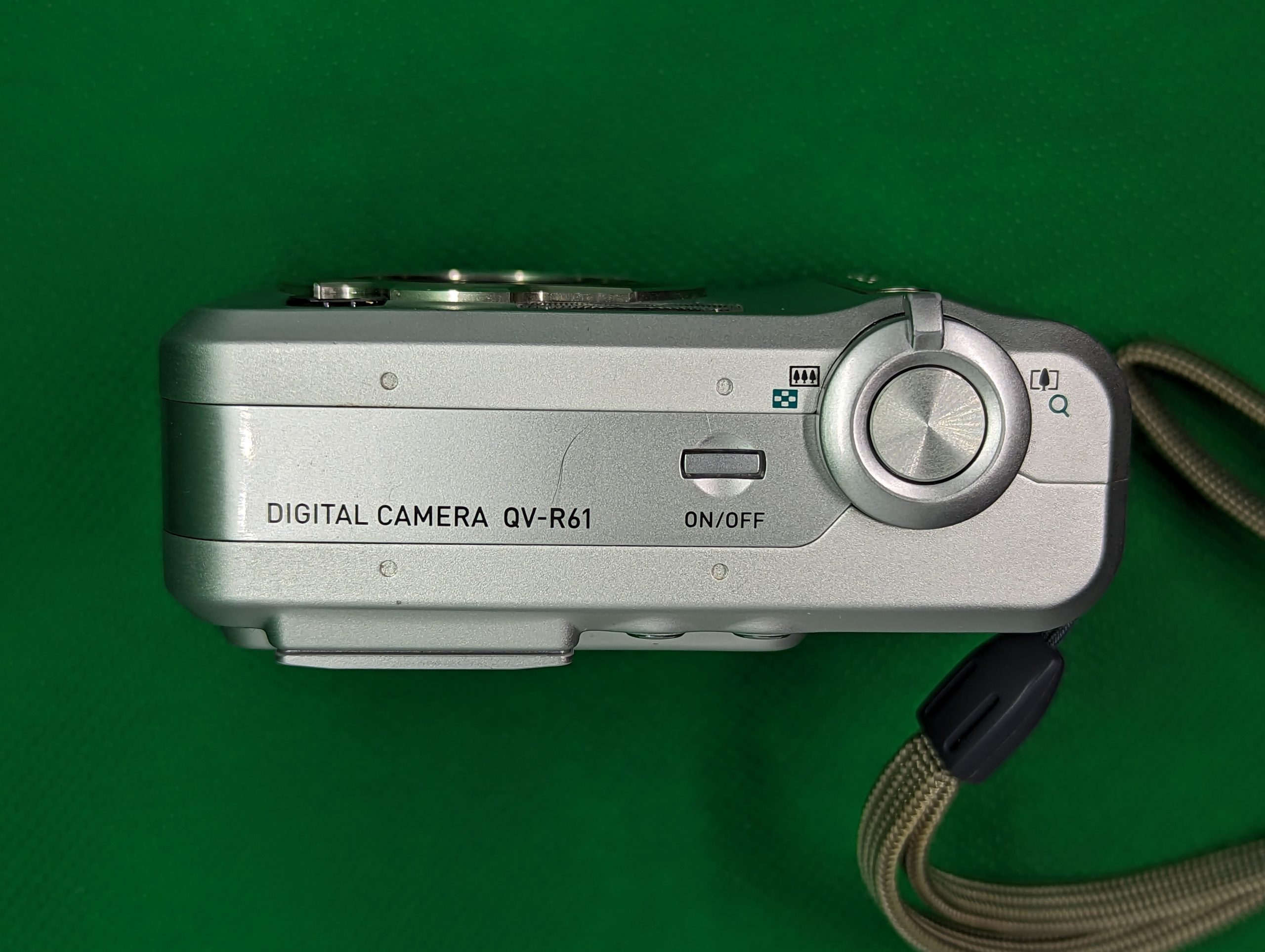



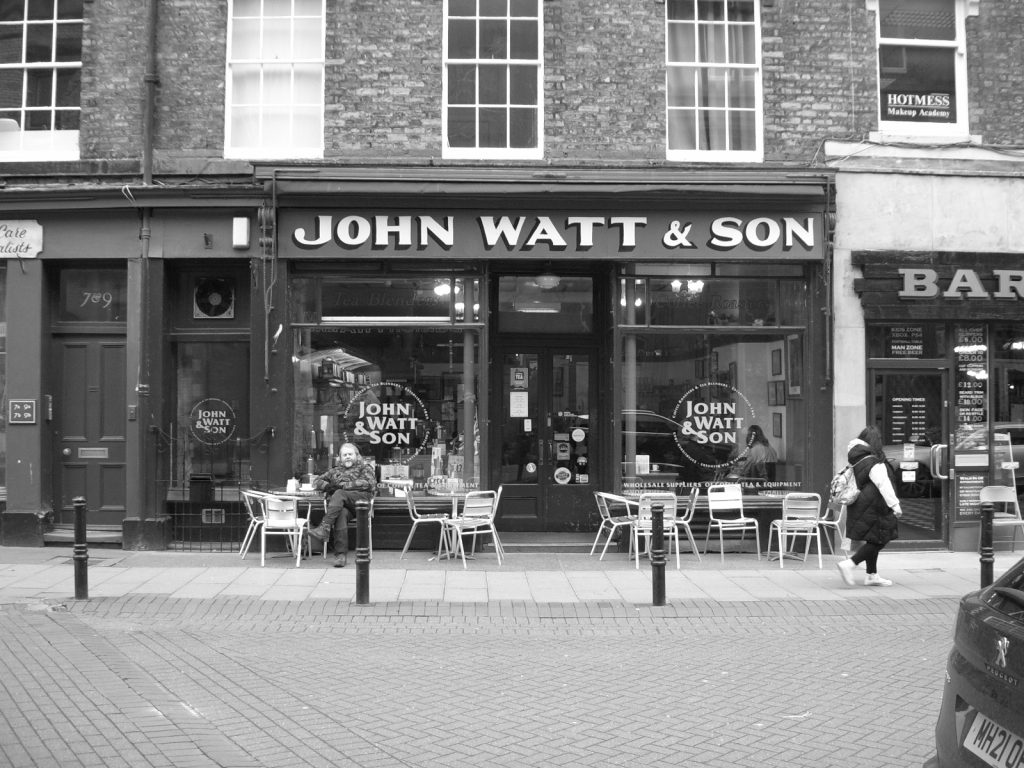


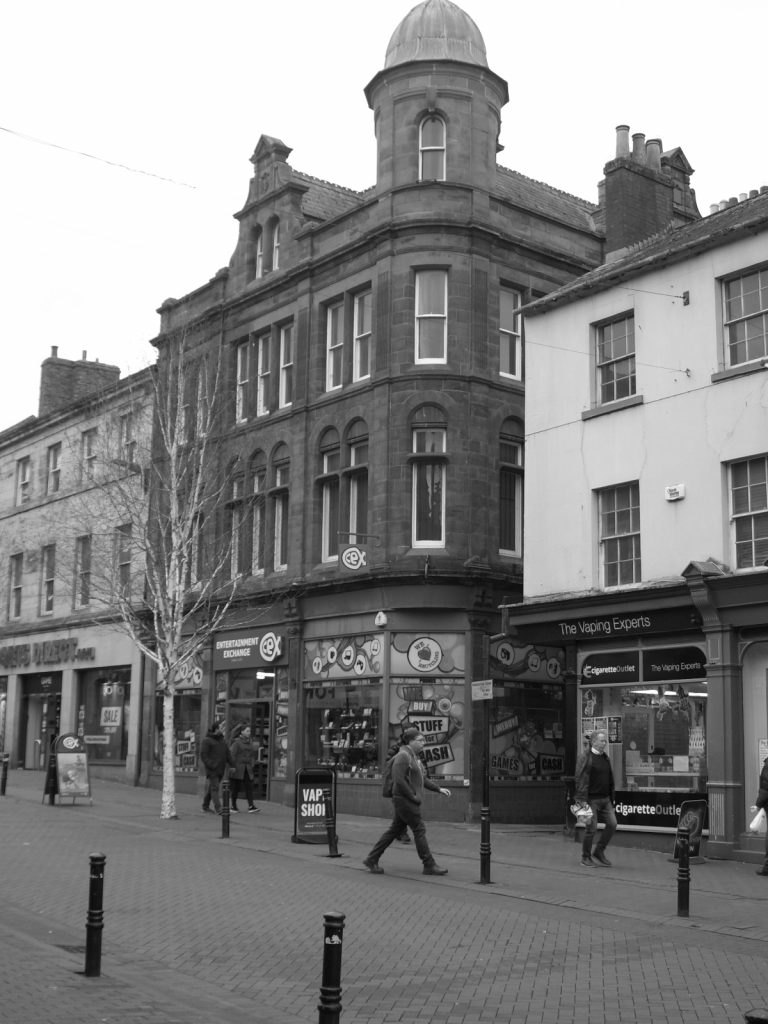
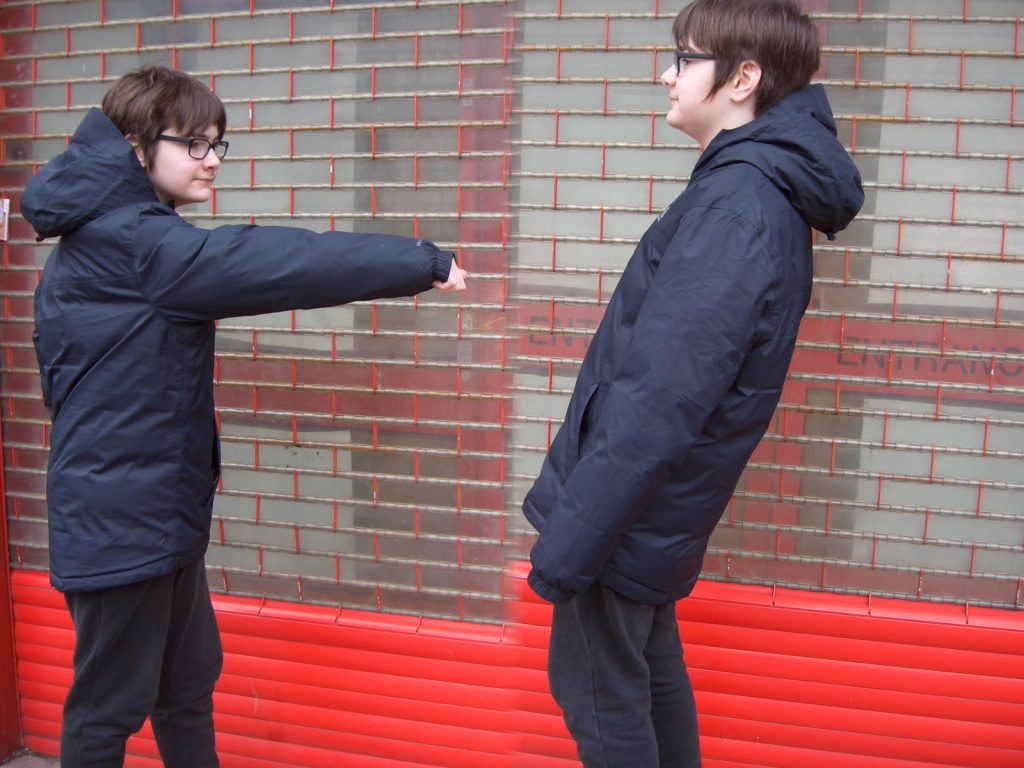

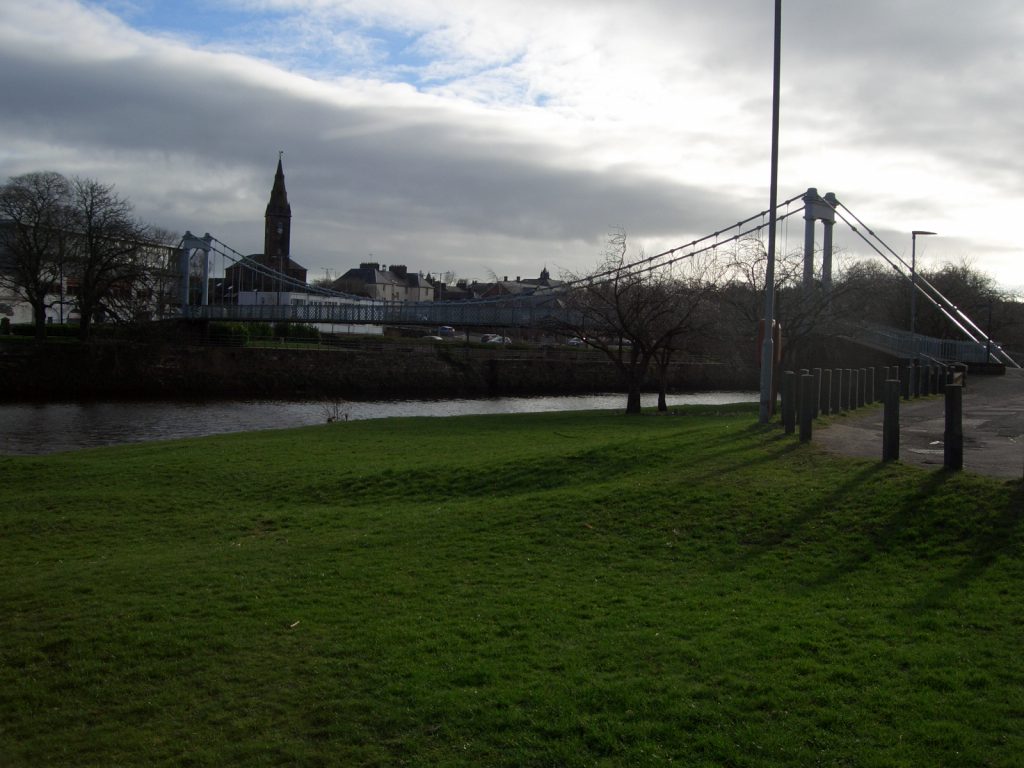






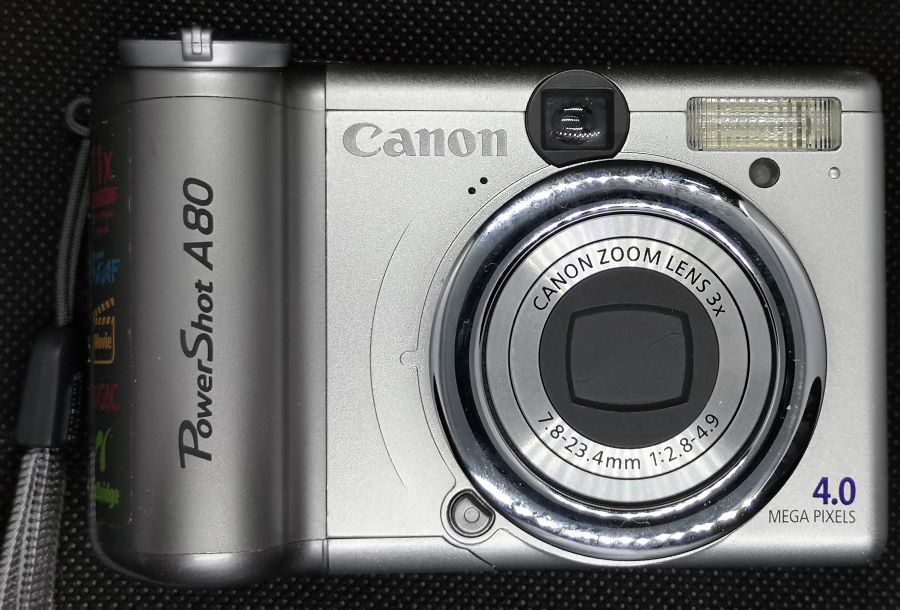
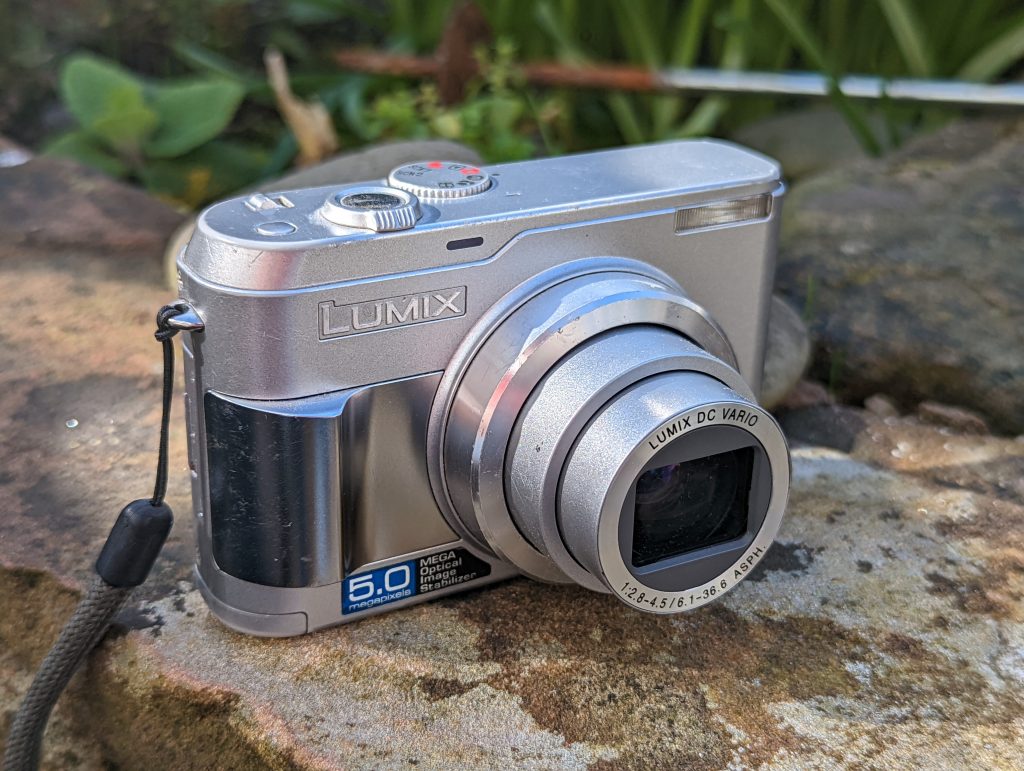
When I was a young man in the 70s and 80s, watches, keyboards, and calculators were the only things Casio was known for.
The Casio QV10 mentioned earlier on is one of my all time favourite cameras for the simple reason I have so many (very tiny and blurry) memories from it. A friends dad had “borrowed” it from his work and we must’ve used it for well over a year before realising anything better was out there. Who knew Casio basically invented selfie mode too…
When it comes to compacts, the Canon Ixus series are my go to, at the time it seemed like only Canon really cared about the design of their compacts, most others were very, very similar with nothing much really standing out. Their stitch assist mode for panoramas was genius too, no idea why they decided to drop it after the ixus 500…! You can find plenty of Ixus 400 or 500 cameras for a quid now simply because every single one of the sensors in them has or will die because they were all faulty from the factory!